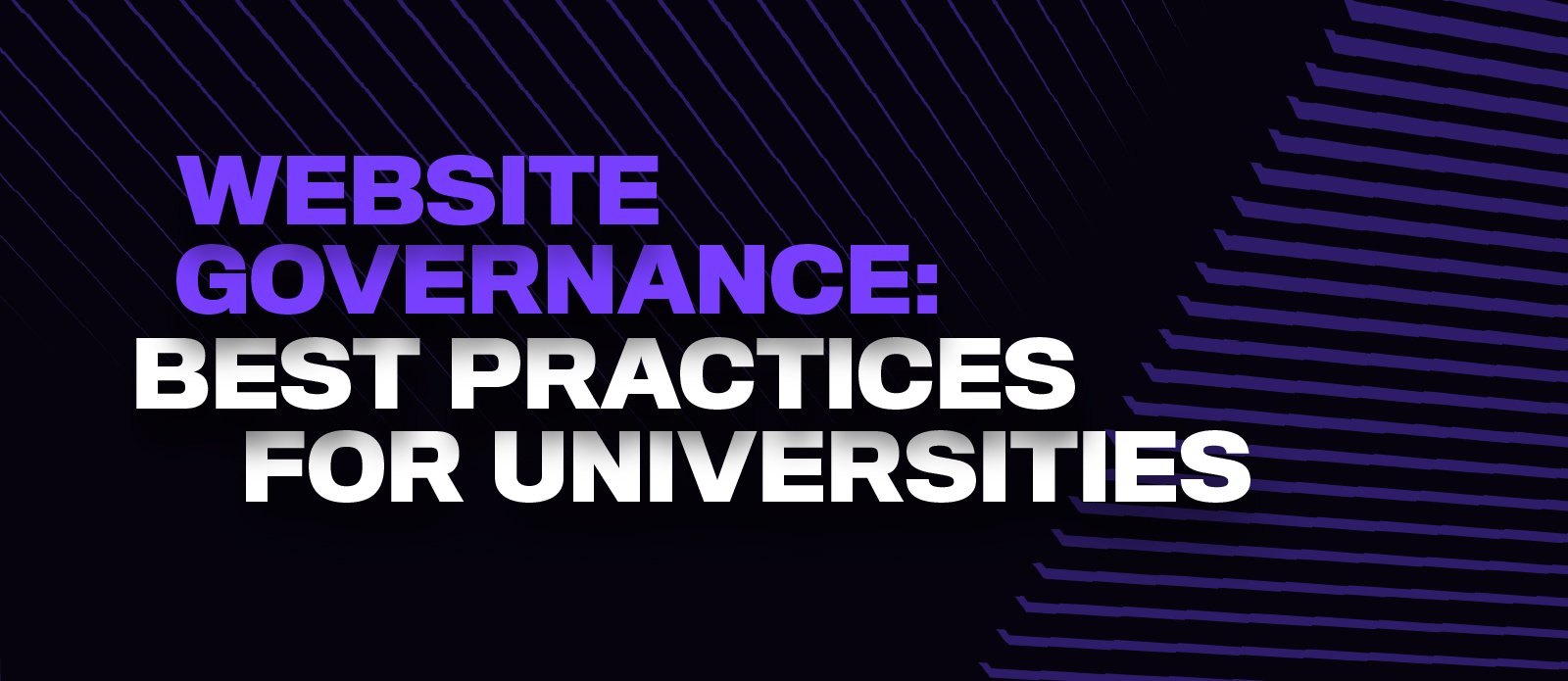
A website is one of the most important digital assets a university owns. It engages alumni, keeps the campus community connected and informed, and can increase student enrollment. Yet, when it’s time for a refresh or redesign, sometimes the biggest pain point isn’t staying on top of the latest web design trends, hiring a consultant, or finding staff with the bandwidth to take on the project. Often, the biggest challenge is deciding website governance. Who is in charge of managing the website, now and in the future?
Major universities have multiple colleges and schools, research centers, administrative offices, and student life groups, and each has its own web presence. That is a lot of web pages! Should schools centralize their web efforts, with university-level staffers responsible for the redesign, functionality, and content creation? Or, should universities decentralize web ownership and let the individual units communicate to their unique audiences?
At UNINCORPORATED, we have helped colleges and universities, such as the University of Southern California, update their websites and work through this issue. No one wants to invest in a website that people have no interest in updating or one that is criticized by university marketing and IT teams. Before you make your decision, consider these issues:
The Case for Website Centralization
- Keep Branding Consistent: A university’s identity, mission, and values are expressed through branding, and a website is a major part of that effort. Branding enables the university to differentiate itself among competitors and recruit the right students. When websites are decentralized, the brand is at risk of being diluted. Well-meaning employees who don’t specialize in marketing have used stock photography that is off-brand when creating web pages, as well as fonts, colors, and logo placements not aligned with the university’s brand identity toolkit.
- Ensure That All Sites are Compliant and Secure: It is not enough to host beautiful, informational, and marketing-savvy university websites. Pages also need to be accessible to people living with disabilities and secure from hackers. Both issues need to be taken seriously. Some 2,256 accessibility cases were filed in federal court in 2018 and cyber crimes against K-12 schools and universities are on the rise. One report from Comparitech estimates that ransomware attacks cost schools $6.62 billion in 2020.
- Effectively Mine Data: In this age of targeted marketing, data is an essential asset. A school’s website holds valuable information that can help communications and marketing gurus make better decisions, learn more about their audience, and smartly allocate their budgets. In a centralized system, data can be pulled quickly, both on the macro and micro levels. When website maintenance and operations are decentralized there is a higher chance that different metrics are being used.
The Case for Website Decentralization
- Have More Timely Updates: Posting a new event or updating a web page does not take on the same level of urgency in a centralized system. A request is simply one of many work orders being filed. A quick fix can sometimes take days to be addressed. This lag could remove a sense of ownership from units within a university and discourage faculty and staff from updating their web pages. Instead, they may feel compelled to send emails. And we know that members of the campus community already receive too many emails.
- Cater to Your Audience: Different communities exist within large universities. The reasons why a business student wants to attend a certain university may be different for an aspiring dance major. Schools and colleges within a university often have a better understanding of their communities and the messages and images that resonate with them.
- Go All-in on the Web: There are some fields of study—such as fine art, computer science, and film— where a modern, beautiful website is a necessary recruitment tool. Yet, some universities are strapped for funds to create a website with the latest functionality and design. Individual colleges and centers have been known to fundraise and reallocate funds to create new, more modern websites. When website operations are centralized, that freedom is gone.
Like what you're reading? Sign up for the Higher Education News Brief, and receive the top stories from across the landscape of Higher Education every Monday.
The Case for a Hybrid Model
As you can see, both website centralization and decentralization have their upsides and downsides. Another option is to create a hybrid model that draws on employees’ strengths. Leave the branding, user experience design, search engine optimization, and web security to the experts at the university level. Then, allocate website updates, content creation, and tailored messaging to unit-specific web specialists.
This is the ideal scenario but certain issues need to be addressed first.
- Get Everyone on the Brand Bandwagon: If brand dilution is the main concern with decentralization, then it is critical to share the importance of branding with university stakeholders. Unfortunately, the university’s communications office only sends a branding toolkit that everyone is supposed to follow. Educating the community first enables more buy-in and a cohesive web experience for users.
- Create a Culture of Sharing: To offer a consistent look and feel for a university’s website collateral, such as photographs and strategic plans, need to be shared. This doesn’t always happen in higher ed. Ultimately, it is the users who suffer when there isn’t a culture of sharing.
- Offer Training: Training employees on a content management system is usually inconsistent. In the beginning, especially when switching to a new CMS, there is a lot of training. After that, most employees are on their own, including those new to the organization. They are often forced to figure it out on their own.
Download your complimentary Brand Manifesto Workbook today!









